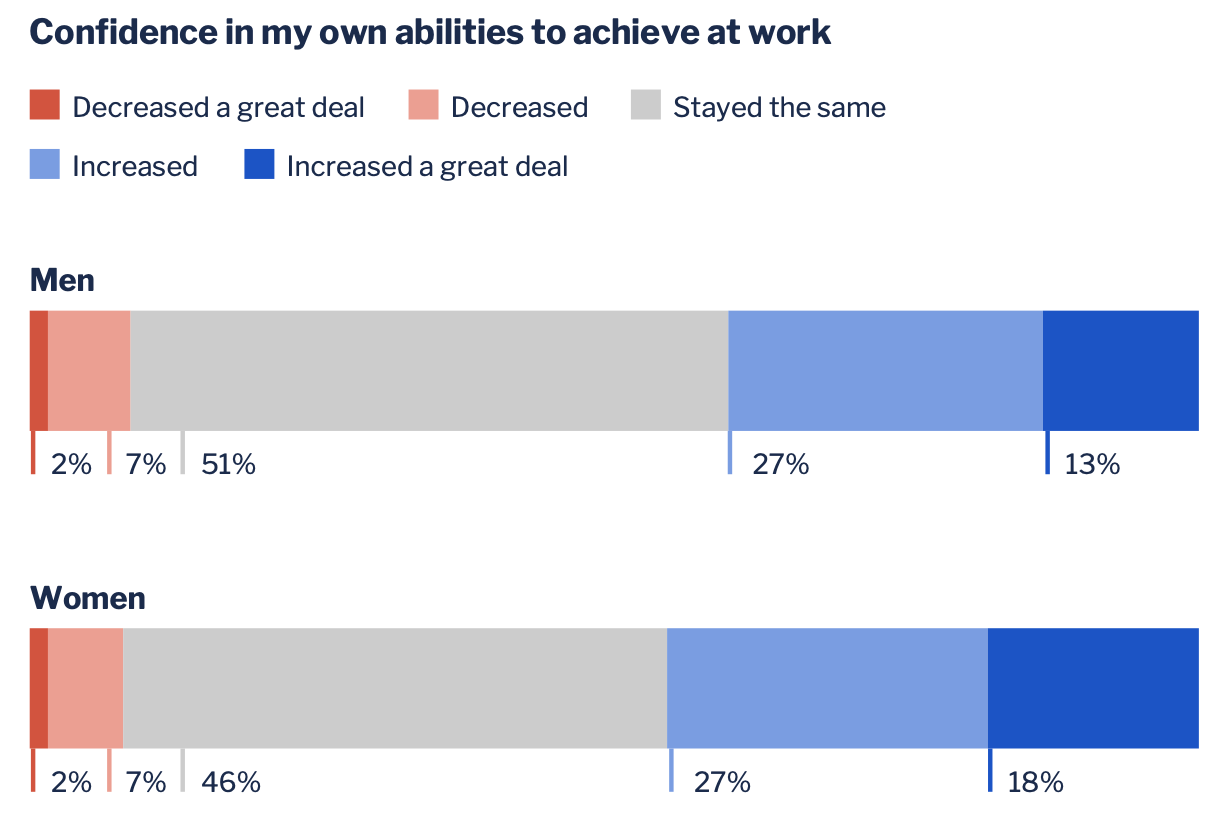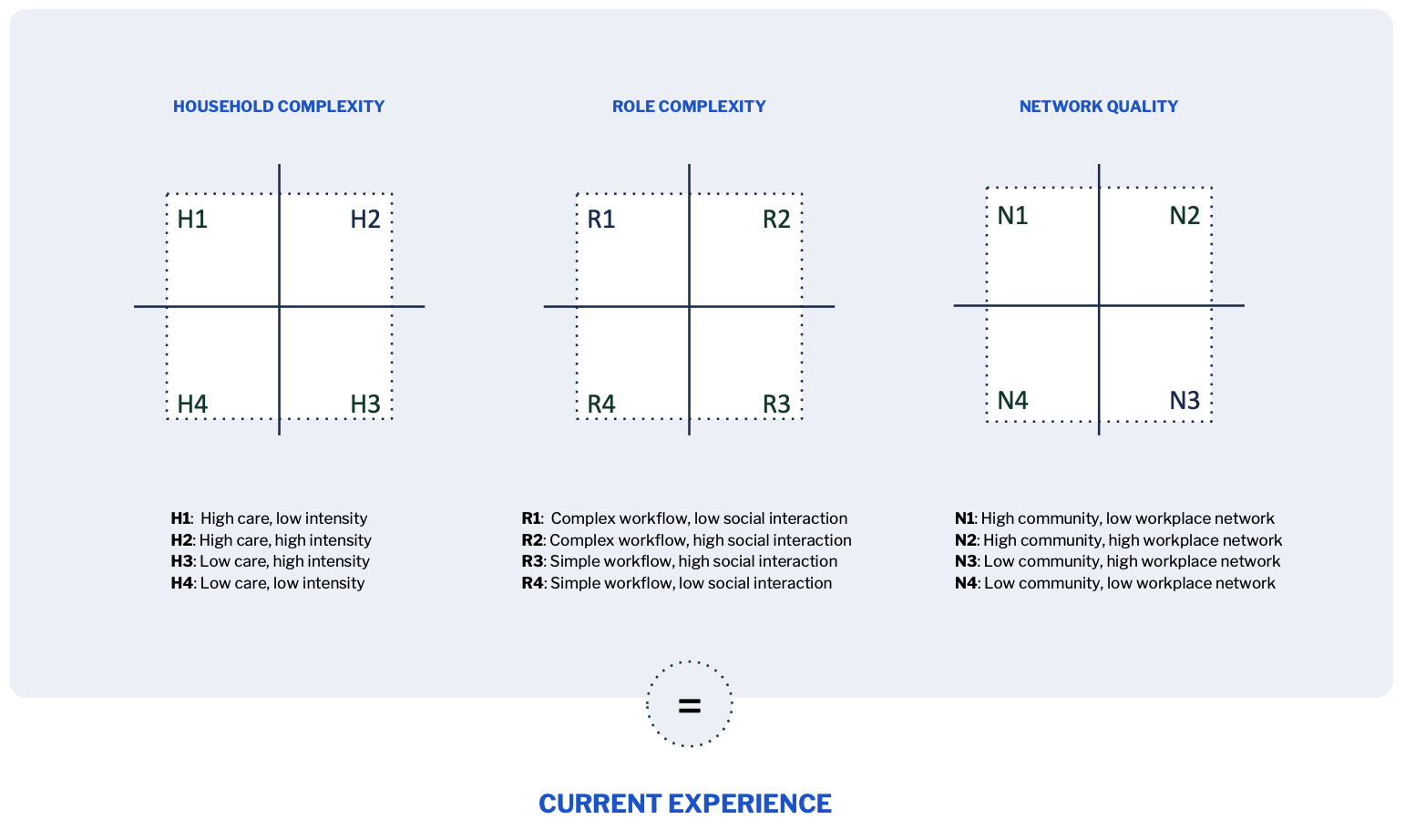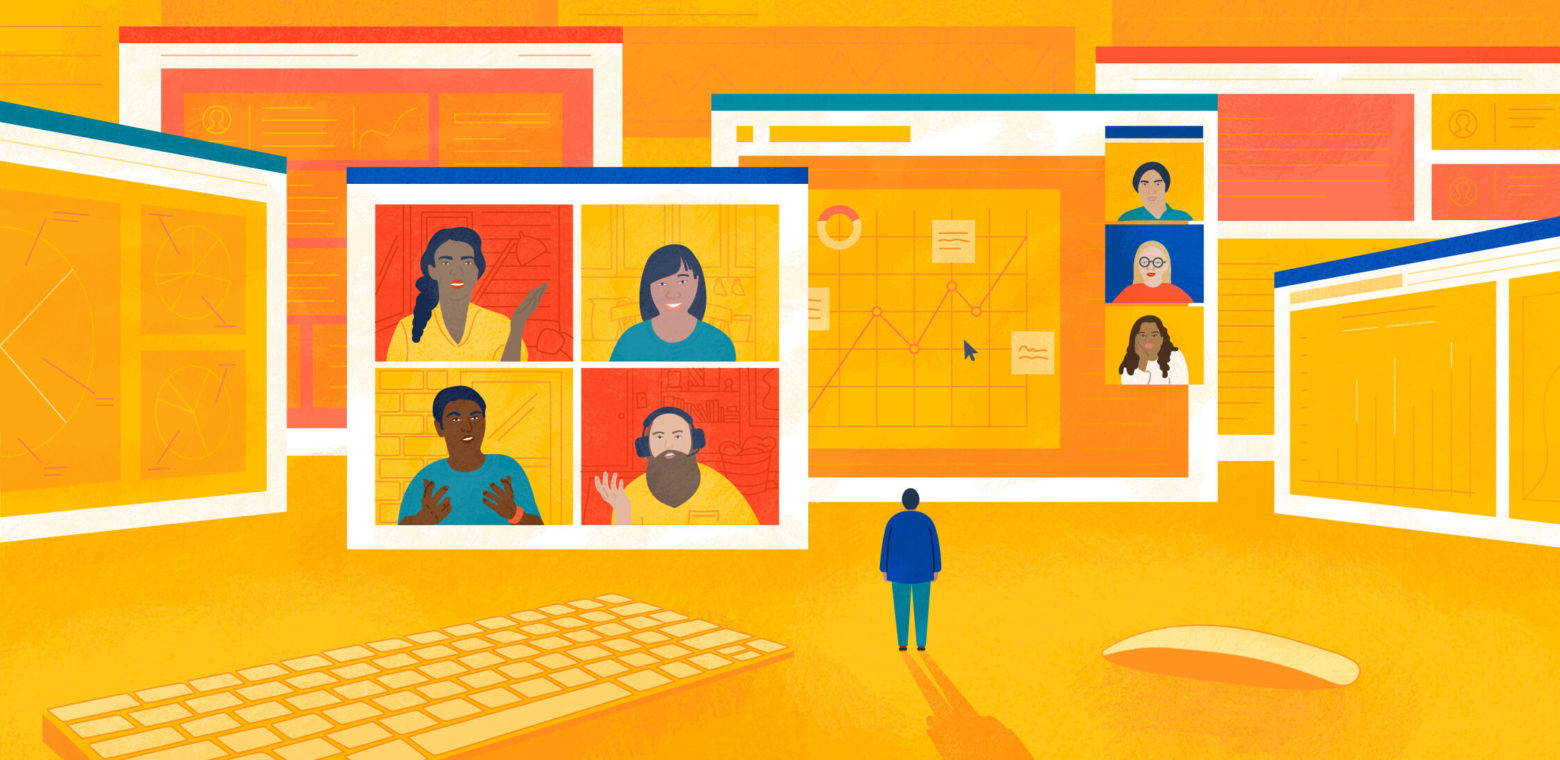As a researcher interested in teamwork and team effectiveness, March 2020 was a fascinating moment for me. Around the world, knowledge workers at organisations large and small were suddenly forced to work from their homes. As we scrambled to get a read on the effect this was having inside Atlassian, we also commissioned an international, multimodal study to capture and make sense of the impact on individuals and teams across a range of industries as they grappled with these extraordinary changes.
This four-month study kicked off in April, and today we are delighted to publicly share what we’ve learned from our research. Unsurprisingly, we have uncovered a range of challenges to overcome, but it’s not all doom and gloom. We found some upsides in the move towards remote working, and plenty of opportunities to seize. At least, that’s how I think of it as I continue to reckon with this world of distributed work. See how your experience compares as we dive into some of the most unanticipated impacts of the pandemic that our research uncovered.
Curious to see the data?
Download a copy of the report here. (Or, if you’re in a hurry, grab the executive summary.)
1: Distributed work could lead to an innovation drought
Collaboration becomes less spontaneous and more intentional in a distributed work context, which means we’re getting a narrower set of inputs than before. We’re trying to optimise the way we work to be more efficient, to avoid endless Zoom Doom, but the flip side of this could be a lack of the accidental connections we would be making as we move around a physical office space. From the report…
People shared the insulating effects of [distributed] work. They missed the organic encounters of others’ work, once pinned to walls or left on desks, which made work in progress open to comment, and improvement. Some were concerned that the quality of the team’s work may be threatened if there continued to be limited perspectives given or gathered.
The research so far indicates other factors that could lead to a potential innovation drought as a result of the way we’re doing distributed work right now. Take the lack of chance hallway encounters and watercooler discussions for example. These may seem frivolous but there’s a feeling these serendipitous moments often lead to innovation opportunities.
We also found that when working remotely, people tended to prefer more structured and routine tasks – especially people who were new to it. They seemed to find working from home more conducive to simpler, less collaborative, more transactional tasks and have prioritised that kind of work recently. (Note that the desire to “escape” into low-stress tasks at a time of high anxiety around COVID may also be a factor here.) But work that leads to innovation tends to be the more complex, messy, and amorphous kind of collaboration. So avoiding or deferring this kind of work could hamper our ability to innovate.
Last, participants expressed concern over the fact that collaboration is more focussed and less inclusive. In an effort to design video calls that are manageable and lead to outcomes, teams are reducing the number of people involved in real-time conversations. While others can catch up by watching the recording or reading the notes, there is a reduced diversity of voices included in discussions, which could, in turn, reduce innovation.
How might we ensure that our emerging ways of working support the characteristics of collaboration that help to drive innovation?
At a high level, we need to get creative and move beyond just transposing our face-to-face work to a virtual equivalent. Let’s think about how we could reshape our work to embrace more asynchronous practices so that we can add some diversity back into our workday, allow for wider contribution, and not sit in endless video meetings every day. For example, my team has had success with making more use of pre-recorded videos and then collecting asynchronous feedback (with a deadline!) on Confluence pages.
On a day-to-day level, we need to make our work more visible – even work in progress. (Especially work in progress.) We should be able to stumble onto colleagues’ work in the digital realm, just like we used to catch it out of the corner of our eyes as we passed their desks. That means less reliance on paper and more reliance on tools like Confluence, Google Docs, and Trello, as well as digital whiteboarding tools like Miro and Mural. It means devising sharing opportunities to help make work more visible for people who aren’t directly involved.
It also means resisting the temptation to restrict access to documents and other content unless it’s absolutely necessary to keep it private, which is actually fairly rare. Making our work discoverable in digital spaces will help bring forth more of those serendipitous watercooler moments.
2: It’s hard for people to know you’re doing great work when it seems so invisible
One surprising bright spot is that, generally speaking, we’re feeling more effective than ever. Individuals have more time for heads-down work, and many teammates feel more connected to each other. At the same time, almost paradoxically, everyone is worried about their work being invisible.
Individuals are commonly driven by a desire to demonstrate their value, in a time where many businesses may be reassessing their operations. Two fifths (43%) of people stated they had become more concerned about their job security and careers.
Individual contributors are worried their managers don’t know they are getting work done, and some managers are worried they can’t see what their team members are doing. Managers are also worried that the outputs of their work are invisible and may not be valued by the organisation. In other words, plenty of people are worried about job security. In fact, anyone whose role is primarily relationship-based, such as account managers or salespeople, is worried about the intangibility of their work. One manager told us, “I sense self-consciousness in the team. They’re now reporting to me each week, the amount of ‘effort’ (time) they’re spending working on projects.”
There are now more location-agnostic opportunities available than ever before and people are looking outside of their companies for career progression opportunities. People are worried that because they and their work are less visible to the rest of the organisation, they’ll have fewer opportunities for career progression inside their current company. “I love the fact I’m really productive, but I’m afraid I’ll lose credibility and become disposable,” said one participant. “I feel kind of out-of-sight, out-of-mind. It’s easier to lose sight of the value I would bring [in higher-level roles].”
One of my colleagues who has been working from home full-time for years pointed out that it takes time to get over the need for the specific type of validation you get from being in the office. The smiles, the off-hand “nice job” comments, the high-fives from your boss. That’s true even when you willingly sign up for a fully from-home job. Being forced into it during an economically stressful time has made matters worse. And we’re compensating.
We’re spending more time than ever reporting, trying to make our work visible to those around us. This is probably not the best use of our time.

How might we develop new ways of working that help demonstrate effectiveness in a distributed work context?
We have an opportunity to embrace the fact that hours worked (or cold-calls made, or lines of code written) was never a meaningful performance metric in the first place. Now is an ideal moment to shift our attention away from outputs of effort, and focus on outcomes achieved instead. Goal-setting frameworks like Objectives and Key Results (OKRs) that measure, well, results are good tools to use at the team, department, and company level. As a bonus, focusing on outcomes may lead to a better work-life balance. If you can achieve the desired result in less time than expected, you have more time for personal matters and/or for career advancement. Either way, you win.
As for the types of validation we’re accustomed to, they can largely be replicated in the digital world. Chat tools like Slack and MS Teams have become the new water cooler. Thanking a teammate for helping you out or calling them out for a job well done is only a few keystrokes away. There’s even an app for Slack called Karmabot that we at Atlassian have a lot of fun with.
3: Working from home brings an unexpected bonus for women
There are a number of interesting observations from the COVID period when we look through a gender lens. In the qualitative pieces of our research, we discovered that some women found working from home advantageous for reasons we hadn’t anticipated. This, despite the well-documented disproportionate burden the pandemic has placed on women and working mothers in particular.
There are fewer ways to demonstrate your status or dominance in the digital office. While some women struggled with this, many found it liberating. When everyone appears equally as a tile on the screen, it tends to level the playing field. Plus, talking over each other is more disruptive on video calls than it is in person, so we’re getting better at waiting for others to finish before we speak. Suddenly, it’s far less easy for the loudest, most senior, or most assertive personality in the room (which are often men) to dominate the discussion.
You feel kind of restrained when you’re in a business office. I can get anxiety going into a meeting with people who, for whatever reason, I might see as above me. These video calls just makes me feel a little more comfortable and open.
– Study participant, U.S.A.
Plus, our idea of what constitutes a “professional appearance” has relaxed, and women are the big winners there. Nails need not be manicured. Hosiery and heels are irrelevant. Hair and makeup can be less-than-flawless and nobody will notice. Free from the time-consuming drudgery that often seems required to meet standards of presentability (which were overdue for an overhaul anyway), women feel more able to focus on doing their jobs.
All of this is reflected in the research. Nearly half of women say their confidence in their ability to achieve has increased. By comparison, two-fifths of men said the same.

As we eventually move back to more mixed methods of working, how might we retain and perhaps even increase these gains in women’s increased confidence and focus?
Along with bringing our relaxed dress codes back to the office with us, we can let go of the notion that meetings must take place in person. We could even take that a step further by proactively planning for Big Important Meetings™ to be distributed by default. Because let’s face it: even if everyone involved typically comes into the office to work, there’s a good chance that when the meeting rolls around, somebody will need to join remotely. Maybe they have to care for a sick child that day. Maybe they’re stuck at home waiting for the plumber to come and repair a pipe that ruptured overnight. Life happens! And it can sneak up on anyone, not just women. Evolving our approach to real-time collaboration may feel awkward at first, the gains in inclusivity and equal participation are worth it. (See point #1 about diverse voices and innovation.)
4: Distributed work brings latent inequalities to the surface
Despite the benefits many women are experiencing, working from home has exacerbated some of the inequalities that already existed – particularly when it comes to our home environments. In the course of talking to people around the globe who were suddenly working from home, we got a first-hand view of how differently people were experiencing this change depending on where they live.
Some people have been able to set up really comfortable spaces to work from and to personalise those spaces to reflect their personality and suit their work needs. Others, particularly those in densely-populated areas and young people, are having to get creative when it comes to setting up a workstation in homes that are very small or very crowded (or both).
People in less-dense areas tend to have more space for a proper home office, but sometimes run into issues around their internet connection’s speed and reliability. And regardless of living situation, people in high-paying industries like tech are more likely to be given a stipend for desks, chairs, etc., by their employer.
It’s one thing to consider the relative comfort or stress of working from home. But, there could easily be effects on people’s career progression, as podcaster Tiffany Philippou captured so vividly:
Perhaps it won’t be long until your colleague with the bigger home and their own private office with working wifi is promoted above you as you are sat on your loo, balancing your laptop on your lap, trying to dial back in for the team meeting.
–Tiffany Philippou
How might we ensure that we don’t allow distributed work to inadvertently introduce additional systemic privilege for people who have larger and/or less complex living spaces?
Just as some employers have offered home office stipends, they could offer stipends to help cover renting a desk at a coworking space when that is a safe option. It may also make sense for people living in tight quarters to get priority when employers start opening up offices again, which will likely involve some kind of phased approach.
As a coworker or manager, be considerate of expectations you might be making of team members and how this could be more difficult if they are in tight living quarters. In the last few months, we’ve heard stories of teams being advised that “virtual backgrounds are disingenuous” or people being required to have a blank, white background when they take calls with people outside the company. This is going to create real difficulties for some employees.
We’d do well to remember that many people don’t have a dedicated workspace that projects a professional persona on camera. The rise of virtual backgrounds for video calls is a lifesaver for people who have to work from their bedrooms but don’t necessarily want to share that with their colleagues. Creating norms that call for “natural” backgrounds or even requiring video to be on all of the time can be challenging for team members who have more difficult working environments.
5: Everyone is experiencing working from home differently, based on three basic factors
Our research demonstrated a wide variety of experiences across our research participants. We have identified a framework of three “experience factors” that can help us understand these different work from home experiences and how to best support them.
- Household complexity – The magnitude of care duties people have responsibility for, as well as the density of their household, affects their remote working experience.
- Role complexity – The complexity of an employee’s workflow, and the level of social interaction they depend on to be successful in their role, influences their job success & satisfaction.
- Network quality – People’s access to personal and workplace communities contributes to a person’s sense of belonging, and support.

We can use this framework to understand the challenges we face, as well as potential opportunities to support each other so we’re individually and collectively more effective. But if we fail to keep these challenges top-of-mind, we risk exacerbating some of the other downsides I’ve mentioned: unequal opportunity to contribute, fewer and more homogeneous inputs, and throttled success of our teams.
How might we better understand and address the diverse challenges our teammates might be experiencing? How should organisations be stepping in to help support these unique needs?
The first step is to plot ourselves and our teammates on these grids to get a more holistic view of our circumstances and what that means in terms of what we need to be successful. As part of our mission to unleash the potential in every team, Atlassian is committed to furthering this aspect of the research. We are currently working on a framework for assessing and understanding this information, as well as research-backed advice for acting on it.
Tip
To understand how these three factors are affecting you and your team, and brainstorm ways you can support each other, check out the new, remote-friendly “Work Life Impact” Play in the Atlassian Team Playbook. You’ll find downloadable worksheets, complete step-by-step instructions, and examples to help guide you. Best of all, it’s free for anyone to use – no logins or sign-ups required.
In every crisis, there is an opportunity
There are many downsides to a global pandemic. Some are utterly heartbreaking, while others are more mundane. But as with every human experience, there is always the flip side – the side that compels us to creativity, the side that presents opportunities to learn.
This research is a snapshot of a particular moment when an enormous number of people found themselves working at home full-time for the very first time. When this study kicked off, many participants were only minimally invested in changing the way they and their teams work. They thought they’d be back in the office quite soon and were just starting to grapple with this as a longer-term challenge.
If we were to take another snapshot in, say, six months’ time, I’m optimistic that we’d find teams have tackled these challenges creatively and come up with all manner of ways to mitigate the possible threats. As for us, we’ll continue to share what we learn as Atlassians around the world adjust to this new (and lasting) reality of distributed work through intentional experimentation and iteration around the way we collaborate.
Stay tuned, and stay curious.








































